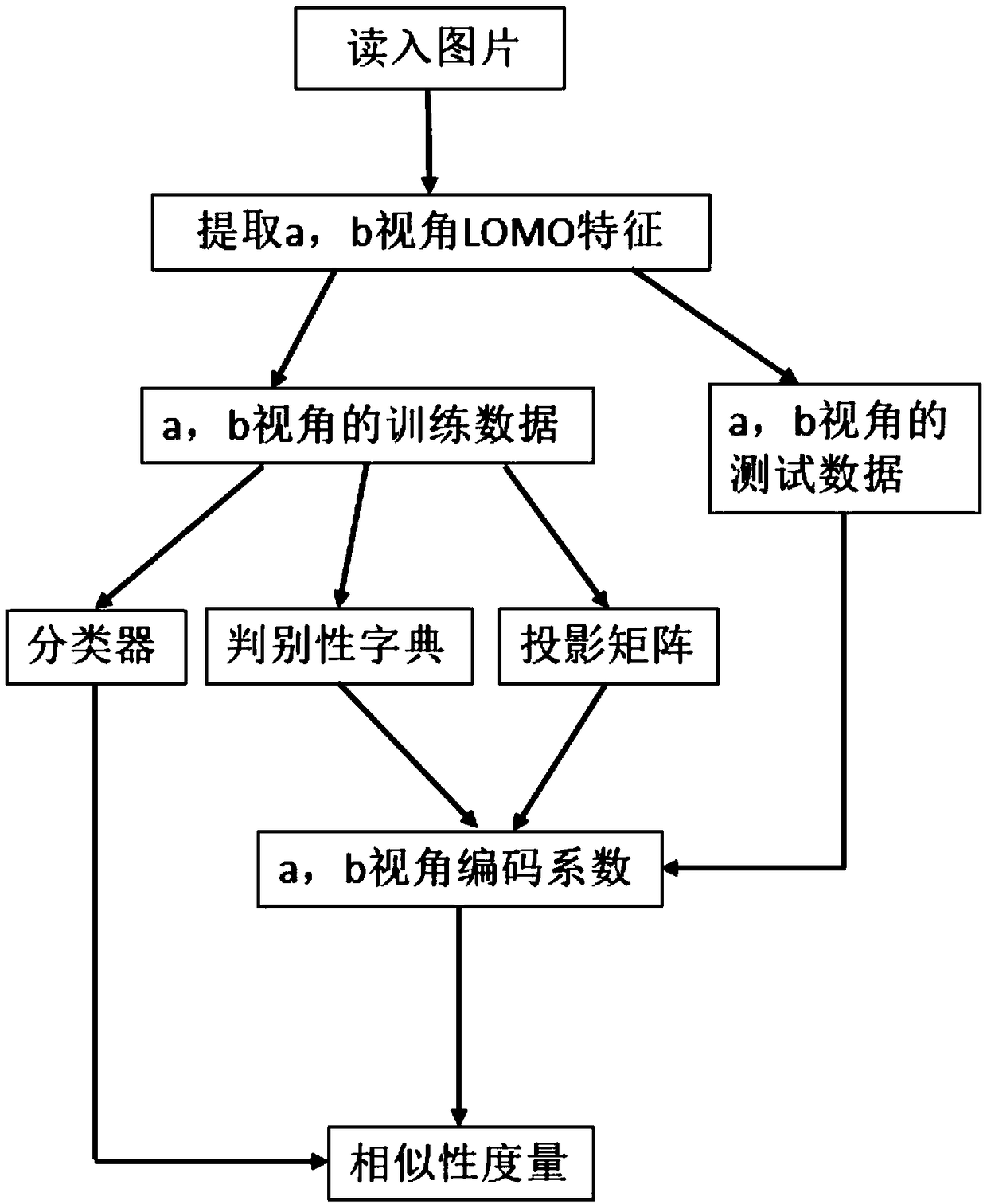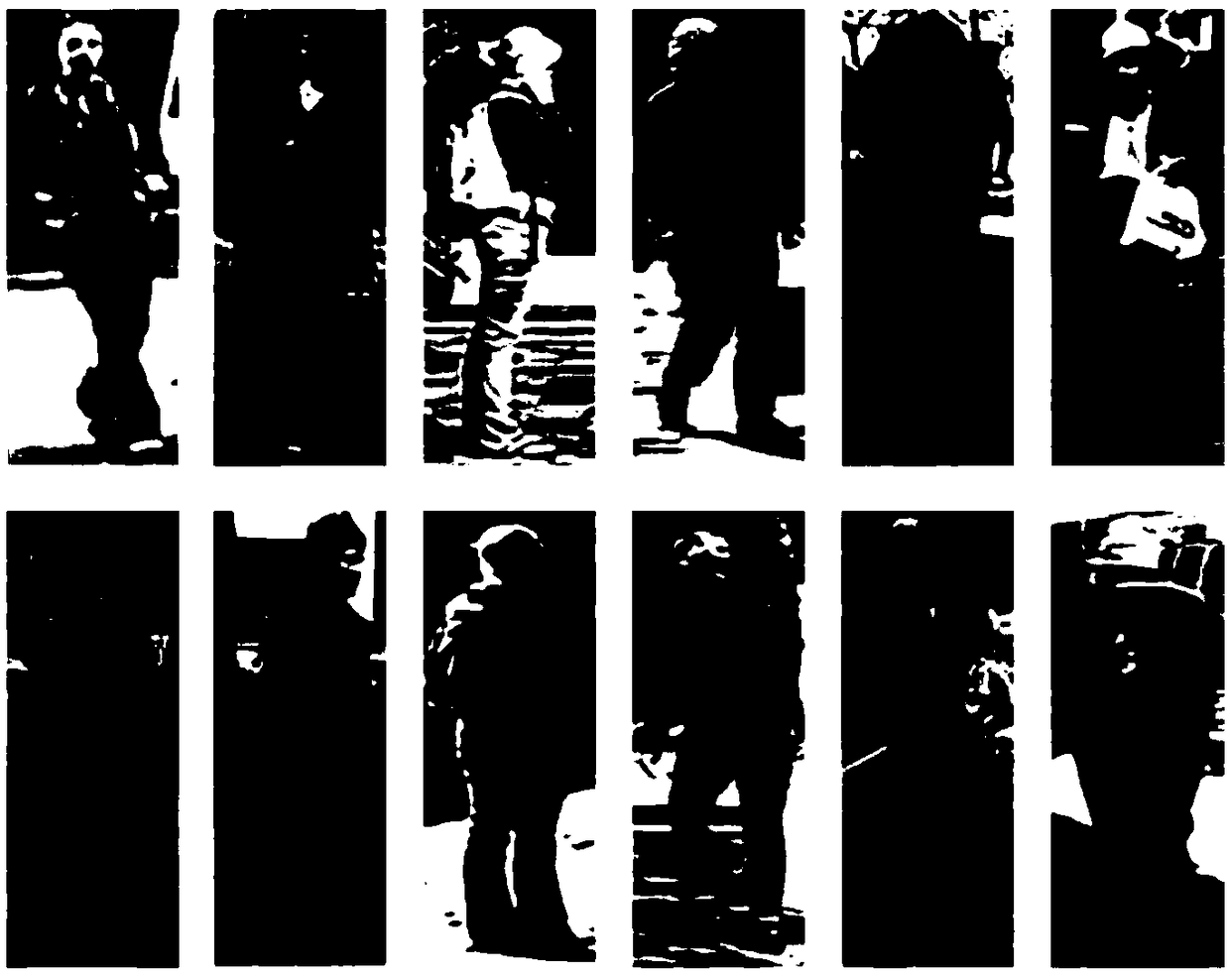A pedestrian recognition method based on label consistency constraint and stretch regularization dictionary learning
A pedestrian re-recognition and dictionary learning technology, applied in character and pattern recognition, instruments, computer parts, etc., can solve problems such as difficulty in matching similar pedestrians, and achieve good results
- Summary
- Abstract
- Description
- Claims
- Application Information
AI Technical Summary
Problems solved by technology
Method used
Image
Examples
Embodiment 1
[0040] Embodiment 1: as figure 1 As shown, a pedestrian re-identification method based on label consistency constraints and stretched regularized dictionary learning, the specific steps of the pedestrian re-identification method based on label consistency constraints and stretched regularized dictionary learning are as follows:
[0041] Step1. Construct training samples and test samples of feature data from two perspectives;
[0042] The concrete steps of described step Step1 are as follows:
[0043] Step1.1. Extract LOMO features from the pictures on the public dataset;
[0044] Step1.2, and then reduce the dimensionality of the feature data, the data of each picture after dimensionality reduction is a column vector (n×1), as a sample of a pedestrian under one viewing angle; the sample data of all pedestrians under one viewing angle is the feature matrix (n×m), n is the dimension of the feature, and m is the number of pedestrians;
[0045] Step1.3. Obtain the feature matri...
Embodiment 2
[0068] Embodiment 2: as figure 1 As shown, a pedestrian re-identification method based on label consistency constraints and stretched regularized dictionary learning, the specific steps of the pedestrian re-identification method based on label consistency constraints and stretched regularized dictionary learning are as follows:
[0069] Step1. Construct training samples and test samples of feature data from two perspectives;
[0070] The concrete steps of described step Step1 are as follows:
[0071] Step1.1. Randomly select 316 pedestrians from the pictures on the public VIPeR dataset to be divided into a training set, and the remaining 316 pedestrians are used as a test set for LOMO feature extraction; figure 2 Pedestrian images under two perspectives randomly extracted from the public dataset VIPeR commonly used for pedestrian re-identification in the present invention, the upper column is the pedestrian image of the a perspective, and the next column is the pedestrian im...
PUM
 Login to View More
Login to View More Abstract
Description
Claims
Application Information
 Login to View More
Login to View More - R&D
- Intellectual Property
- Life Sciences
- Materials
- Tech Scout
- Unparalleled Data Quality
- Higher Quality Content
- 60% Fewer Hallucinations
Browse by: Latest US Patents, China's latest patents, Technical Efficacy Thesaurus, Application Domain, Technology Topic, Popular Technical Reports.
© 2025 PatSnap. All rights reserved.Legal|Privacy policy|Modern Slavery Act Transparency Statement|Sitemap|About US| Contact US: help@patsnap.com



